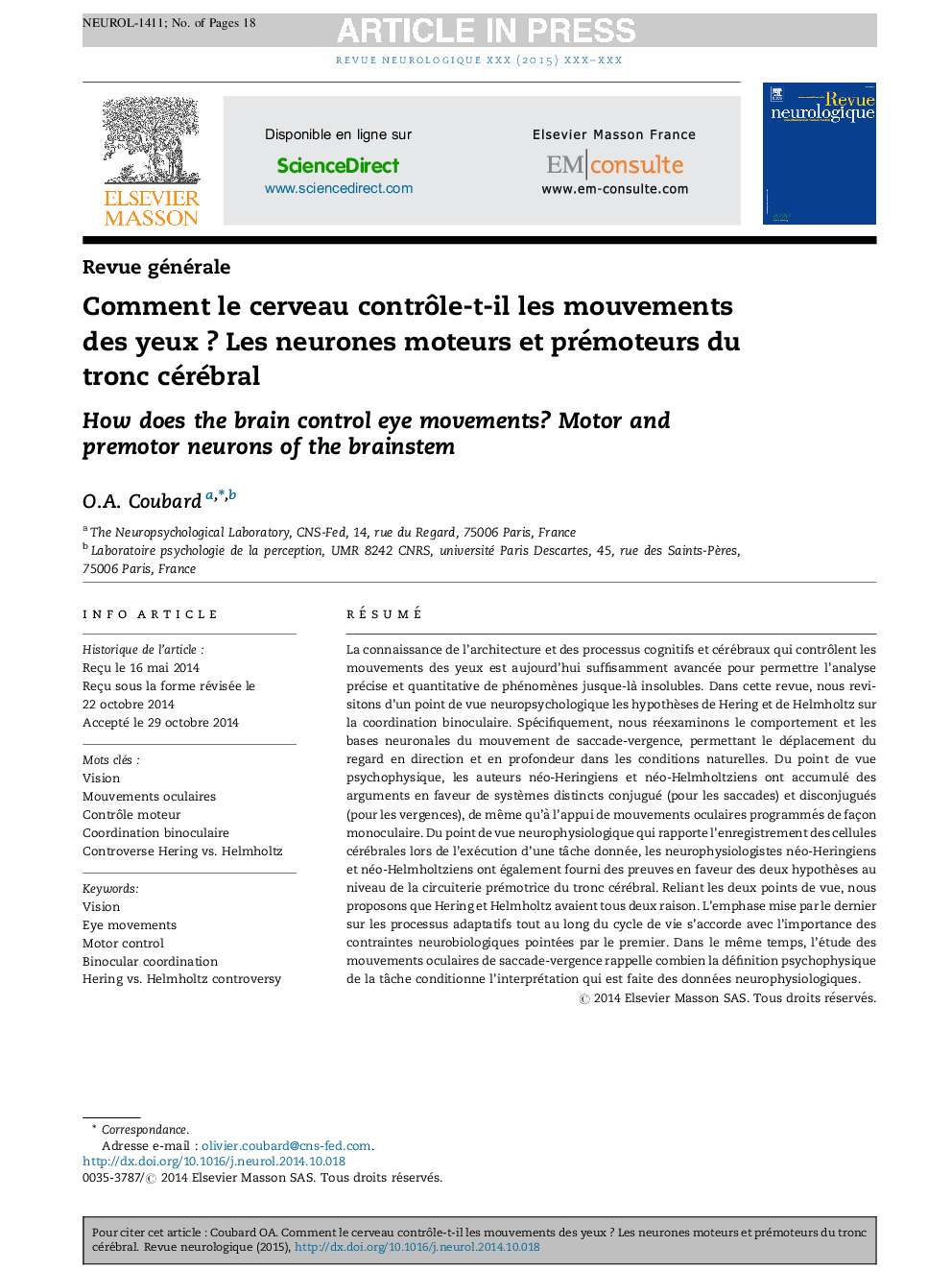| کد مقاله | کد نشریه | سال انتشار | مقاله انگلیسی | نسخه تمام متن |
|---|---|---|---|---|
| 3087586 | 1190154 | 2015 | 18 صفحه PDF | دانلود رایگان |
عنوان انگلیسی مقاله ISI
Comment le cerveau contrôle-t-il les mouvements des yeux ? Les neurones moteurs et prémoteurs du tronc cérébral
دانلود مقاله + سفارش ترجمه
دانلود مقاله ISI انگلیسی
رایگان برای ایرانیان
کلمات کلیدی
موضوعات مرتبط
علوم زیستی و بیوفناوری
علم عصب شناسی
عصب شناسی
پیش نمایش صفحه اول مقاله

چکیده انگلیسی
Knowledge of cognitive and neural architecture and processes that control eye movements has advanced enough to allow precise and quantitative analysis of hitherto unsolved phenomena. In this review, we revisit from a neuropsychological viewpoint Hering vs. Helmholtz' hypotheses on binocular coordination. Specifically, we reexamine the behavior and the neural bases of saccade-vergence movement, to move the gaze in both direction and depth under natural conditions. From the psychophysical viewpoint, neo-Heringian and neo-Helmholtzian authors have accumulated arguments favoring distinct conjugate (for saccades) and disconjugate (for vergence) systems, as well as advocating for monocularly programmed eye movements. From the neurophysiological viewpoint, which reports brain cell recordings during the execution of a given task, neo-Heringian and neo-Helmholtzian physiologists have also provided arguments in favor of both hypotheses at the level of the brainstem premotor circuitry. Bridging the two, we propose that Hering and Helmholtz were both right. The emphasis placed by the latter on adaptive processes throughout life cycle is compatible with the importance of neurobiological constraints pointed out by the former. In the meanwhile, the study of saccade-vergence eye movements recalls how much the psychophysical definition of the task determines the interpretation that is made from neurophysiological data.
ناشر
Database: Elsevier - ScienceDirect (ساینس دایرکت)
Journal: Revue Neurologique - Volume 171, Issue 4, April 2015, Pages 341-358
Journal: Revue Neurologique - Volume 171, Issue 4, April 2015, Pages 341-358
نویسندگان
O.A. Coubard,